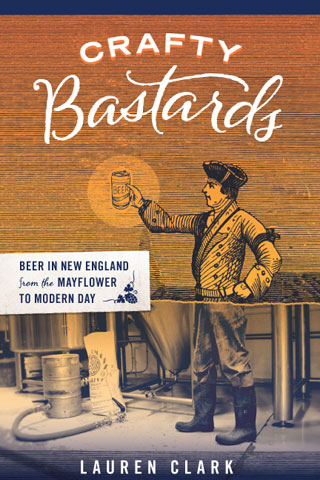September 7th, 2010
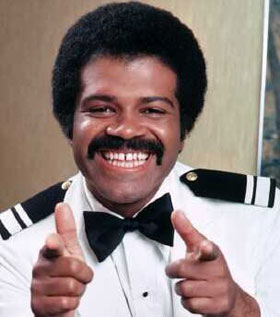 “I’m thinking of becoming a bartender. Where do I start?” is a question I get asked regularly. It generally comes from people fired up about the rise of craft mixology, the notion of bartending as a “real” career, and the infectious passion and knowledge displayed by many of today’s serious bartenders. People fed up with their day jobs, or just out of college and considering career choices, dream of hoisting a Boston shaker and making the world happy with good drinks and banter like Ted Lange on the Love Boat.
“I’m thinking of becoming a bartender. Where do I start?” is a question I get asked regularly. It generally comes from people fired up about the rise of craft mixology, the notion of bartending as a “real” career, and the infectious passion and knowledge displayed by many of today’s serious bartenders. People fed up with their day jobs, or just out of college and considering career choices, dream of hoisting a Boston shaker and making the world happy with good drinks and banter like Ted Lange on the Love Boat.
These are all fine reasons to want the job. Oh, the money can be good, too. But unless you own the bar or are very close to the person who does, you’re probably not going to find yourself behind the slab if you don’t have experience. OK, so how do you get there? Here’s some advice that comes from conversations I’ve had with career bartenders. By the way, this isn’t a step-by-step process; it’s a multi-pronged strategy.
You don’t need a license or a bartending-school diploma. There’s no such thing as a bartending license. (However, many bartenders must take the TIPS course on avoiding overserving or serving to minors.) Most bartenders don’t recommend bartending school; very few of the professionals I know have attended one. They say that while it won’t hurt your chances of getting a job, it doesn’t really prepare you for working in a real bar, and that your money and time are better spent on some of the following.
Learn all you can on your own. Get some basic bar equipment, some recommended books (Gary Regan’s Joy of Mixology and Dale DeGroff’s Craft of the Cocktail are good places to start) and some booze, watch a few videos by bar/mixology experts, and start mixing drinks at home. (Also, consider taking a short, basic mixology class at the Boston Shaker in Somerville.) This will give you a certain comfort level with pouring, measuring and shaking/stirring. Your friends and neighbors will serve as your first customers.
Take a lot of field trips. Again, this is where your bartending-school money is probably better spent — at actual bars. Go to a top-notch cocktail bar, park yourself on a stool and observe, observe, observe. Watch the bartenders’ drink-making technique, see how they multi-task and interact with guests, notice the types of spirits they use, witness them card or shut off a customer (hopefully not you).
Talk to your bartender. It should go without saying that you only do this during lulls in service. And don’t ask, “How do I do what you do?” Rather, think of specific questions like, “Why do you shake some drinks and stir others?” or “Could you tell me about the bitters you used in my drink?” or “What do you do to prep the bar for a shift?” or “How did you start tending bar?” Note: being a good-tipping regular will greatly facilitate these interactions. See: How to treat a bartender.
Get experience any way, anywhere you can. Even it it’s unpaid at first. Got an acquaintance who works for a catering company or does events where drinks are served? Offer to go along and cut limes, fetch ice, etc. Find a bar that has sleepy daytime shifts and offer to work other positions that need filling in exchange for getting a shot at a bar shift. Put feelers out to all those bartenders you’ve been getting to know as a customer. See if a bar is willing to try you out for a couple of uncompensated bar-back shifts.
Be realistic. The bartenders who are truly adept at what they do have usually been at it for several years. They have the personalities, talent and toughness it takes to stick with a job that demands long hours without a break, is physically and psychically stressful, generally offers no benefits of any kind, and involves the various hazards of late-night shenanigans. You will probably know very quickly whether you are cut out for this. That said, I don’t mean to discourage you. Give it a try. A good bartender is always in demand.
Permalink | 4 Comments | Filed under Bartenders, Books & resources | Tags: bartender training, bartending career, bartending school
August 31st, 2010
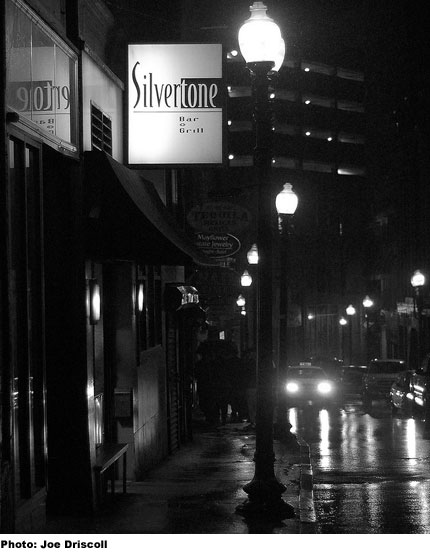
Established: 1997
Specialty: Wine, cocktails
Prices: Low to moderate
Atmosphere: Retro-tinged neighborhood joint, bartender’s bar and classic downtown Boston destination, all in one. See Best Boston bars for address and contact info.
In the world of contemporary Boston bars, Silvertone is an elder statesman that’s still very much an influential player — and a faithful drinking buddy to boot.
Co-proprietor Josh Childs opened the place in 1997 in a “weird little tucked-away space” on Bromfield Street. Silvertone (named after the brand of mid-century radios, amps and guitars coveted by collectors) was an unusual and immediately appreciated concept at the time, the time being pre-No. 9 Park, pre-Mantra, pre-“ladder district” … basically pre-Downtown Crossing as a hip destination. Cheap, satisfying comfort dishes (mac n’ cheese, steak tips), a mere $10 markup on good bottles of wine, a tastefully retro diner-meets-lounge look, and a warm, competent staff beckoned the business-people, lawyers (Suffolk Law School is a neighbor) and restaurant-industry folk who were and are still key elements of Silvertone’s clientele.
From the start, Silvertone showed particular love toward that latter group — our hardworking servers, bartenders, chefs, etc — by keeping its kitchen open until 11:00 (hardly anyone outside Chinatown was doing that in ’97), hiring a solid, loyal bar staff and doing a “good last call,” says Childs, who can still be found behind the bar on Tuesday nights serving drinks right up until 2:00 a.m. (Silvertone’s other longtime bartender, Cedric Adams, and his colleague Michael Stevens, are “like bookends,” each working three nights apiece.) Before they became celebrity chefs and restaurateurs, Ken Oringer, Andy Husbands, Barbara Lynch and Garrett Harker dropped in regularly after their shifts, and before they became celebrity wine and cocktail consultants, Steve Olsen and Willy Shine were admirers.
Which brings us to Silvertone’s liquid legacy. It might not have been as influential on our city’s current cocktail scene as the B-Side, but, in addition to listing the Negroni on its first drink menu, Silvertone does have the distinction of pioneering the Boston restaurant industry’s obsession with the insanely medicinal Italian digestivo Fernet Branca. Early on, its back bar also boasted Chartreuse VEP, Blanton’s bourbon (before boutique bourbon became a staple) and a dozen single-malt scotches.
These days, says Childs, who opened Trina’s Starlite Lounge in 2009, there’s a greater appreciation at Silvertone for cocktails — e.g. sour mix gave way to fresh citrus a while back. But it’s “still a bar,” where shots and beers are regularly ordered, he says. “There’s something to be celebrated about being a good bar.”
Permalink | 6 Comments | Filed under Boston bars | Tags: Cedric Adams, Downtown Crossing, Fernet Branca, Josh Childs, Michael Stevens, Silvertone
August 27th, 2010
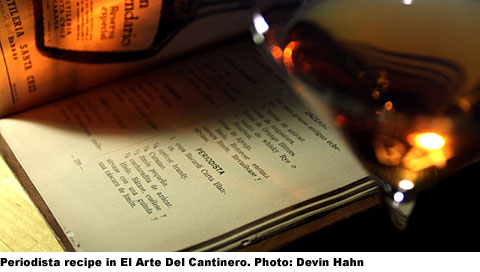
Watch out when making off-hand remarks around Devin Hahn, author of the blog Periodista Tales. He will record everything you say. Then publish it. The thing is, you’ll be (mostly) thankful he did.
Hahn began writing the engaging, real-time narrative of his quest to find the origins of the Periodista — a drink found on multiple cocktail menus in Boston but apparently unknown in other cities — a mere few months ago. And already, the description of the Periodista on the menu at Eastern Standard pays homage to him. Already, cocktail historians around the country know about him.
In his most recent installment, he describes a sit-down we had at the Franklin Cafe to talk about this apparently Cuban cocktail (of which he now knows more than probably anyone alive) and other matters of the Boston drink scene.
If you dig cocktail history and haven’t checked out Hahn’s blog yet, I suggest you start from the beginning.
Permalink | No Comments | Filed under Books & resources, Cocktails, drinkboston in the news, Rum | Tags: Cuba, Devin Hahn, Periodista
August 19th, 2010
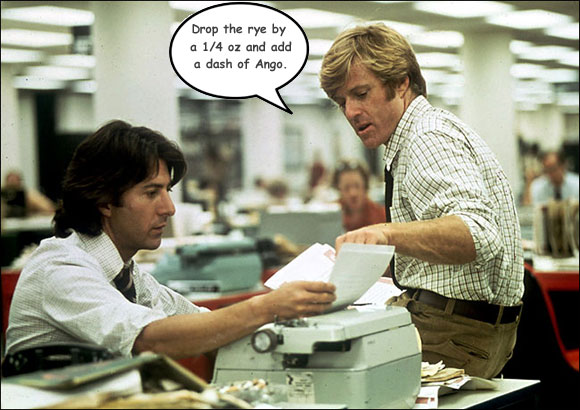
I’ve hit a wall — a wall of cocktails. No, I haven’t had too much to drink (the night is young). Rather, I can’t decide what to drink in the first place. There are too many cocktails out there. This is a fabulous problem.
Talented bartenders around the city are in a spasm of creativity. When they’re not creating new cocktails for their oft-rotating menus or to satisfy their individual customers’ nightly whims, they’re whipping up new recipes for liquor brand-sponsored contests and promotions. (And as we know, more and more bartenders are going further, moonlighting as mixologists for spirits companies.) At the same time, they’re continually digging old cocktails out of obscurity as re-printings of vintage bartending manuals proliferate.
Hence, I can always order something I’ve never had before at a half-dozen or more bars around town. What I end up with is usually pretty satisfying. But is it memorable? This is where I hit that proverbial wall. Either I don’t give enough cocktails a chance to cast a spell over my senses, or not enough cocktails are that magical in the first place.
I’m not going to get all Bernard DeVoto and say that there are only two cocktails, a slug of whiskey and a Martini (although those are on my desert island list). I’m saying that, like writing or filmmaking, cocktailing — both production and consumption — needs a little editing. Or sometimes a lot of editing.
And different kinds of editing, too. Think of a bar as a publishing house. There are the acquisitions editors, who curate the recipes according to the house philosophy and the season. There are the content editors, who pick apart a recipe, try different proportions, add a barspoon of this or a twist of that, and form it into a workable draft. There are the copyeditors, who refine things further by suggesting perhaps a different brand of gin or a flamed peel. And there are the proofreaders, who notice mistakes like a lipstick-stained glass or wilted mint.
The wrinkle, of course, is that the bartender has to fill most if not all these roles. The customer generally works in the proofreading department but sometimes takes on some copy and content editing, depending on his knowledge of cocktails and rapport with the bartender.
Customers have to be their own editors, too. If you, like me, have hit a cocktail wall, maybe you need to pare down a bit. Stick with, say, 10 different cocktails and get to know them over the course of a year. Choose depth over variety. After that period, you might have acquired enough wisdom, palate-wise, to quote Samuel Johnson to an up-and-comer behind the bar who just served you his fourth new creation of the evening: “Read your own compositions, and when you meet a passage which you think is particularly fine, strike it out.”
Permalink | 8 Comments | Filed under Cocktails | Tags: editing, mixology, technique
August 12th, 2010
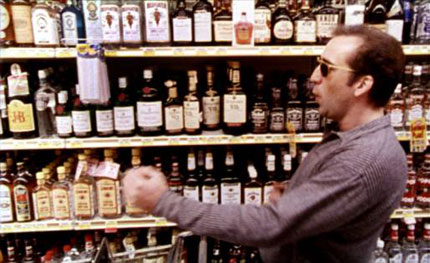
A friendly reminder that this coming tax-free weekend doesn’t just apply to TVs, leather armchairs and solid-wood shellcases for your iPad. It also applies to booze. Have your eye on a bottle of green Chartreuse VEP ($130)? Strathisla 1967 Speyside scotch whisky ($175)? Remy Martin Cognac Louis XIII Grande ($1700)? Well, grab your shopping cart and boogie down the aisle of one of these fine establishments.
» Boston wins. Damned if Boston didn’t hit it out of the park during Tales of the Cocktail in July. First of all, more Boston bar industry folk represented our city at New Orleans’ annual drinks convention than ever before. Second of all, Drink won the Grand Marnier-sponsored Barroom Brawl, besting five other top-notch cocktail bars from around the U.S. and earning the title Best Bar in America. Third of all, Drink’s Misty Kalkofen won the Pisco Sour Pentathalon and will in the near future enjoy her prize: a trip to Peru to see how desert-grown grapes turn into white brandy. Congrats to all! Liza Weisstuch offers a vivid snapshot of the competition and, more generally, the Boston slant on Tales in today’s Phoenix. Good stuff.
» Remixology. Speaking of contests, there’s a new bar celeb in town: John Mayer of Cambridge’s Craigie on Main. A relatively new member of the staff there, he wowed everyone at the Appleton Estate Rum Remixology contest earlier this week with his mixing skills, sense of humor and ability to explain how a favorite song inspired a new cocktail. His presentation involved Frankie Valli’s “Sherry Baby,” a powder-blue brocade blazer, three mixing glasses spinning on a turntable, a small disco ball, a history lesson on Jamaica’s first prime minister — Alexander Bustamante — and the year 1962. He will compete in the national finals of the competition in NYC on August 30. Go, John! Here are recipes for the Bustamante and the other semi-finalists’ tasty drinks.
» Literature. Geoff “Psycho-Gourmet” Nicholson’s fantastic essay, Drink What You Know, appeared in the New York Times’ Book Review recently. He starts by comparing the advice writers dispense about drinking to the way they depict drinking in their literature, and arrives at his thesis:
“When you think about it, rules for drinking are not so different from rules for writing. Many of these are so familiar they’ve become truisms: Write what you know. Write every day. Never use a strange, fancy word when a simple one will do. Always finish the day’s writing when you could still do more. With a little adaptation these rules apply just as well for drinking. Drink what you know, drink regularly rather than in binges, avoid needlessly exotic booze, and leave the table while you can still stand.”
Read it. And then check out the response over at Jezebel: the Reader’s Drinking Game.
» History. I was putting off going to Plymouth to learn about Pilgrims until my retirement years, but now I have a reason to go earlier. Pilgrim Hall Museum (“America’s museum of Pilgrim possessions”) is running an exhibition called “Plymouth History in a Glass: The Artifacts and Culture of Beverages and Drinking” until December 31. Silver tankards. Ceramic punch bowls. Glass tumblers. Ooh, I’m getting hot flashes. Not only that, there are two related lectures: one on historic Plymouth-area taverns on August 25 and one on September 29 called “The Design of Drinking: from the Jazz Age to the Space Age.” Far out.
» Name that bar. What would you call a bar frequented by venture capitalists, entrepreneurs and hardworking graduate students from all over the world who converge on the high-tech cluster that is Kendall Square, Cambridge? The people behind the in-the-works “Venture Cafe” are seeking a more clever name than the working title for their “place-based social networking” project. They have partnered with restaurateur Gary Strack from Central Kitchen and the Enormous Room and are scouting Kendall Square locations for a 2011 opening. With any luck the place will liven up the woefully nightlife-less neighborhood. Got a suggestion for what to call the place? Chime in on their Facebook page.
Permalink | 1 Comment | Filed under Bartenders, Booze in the news, Cocktails, New Orleans, Nips, Pisco, Rum | Tags: Bustamante, Craigie on Main, Drink, history, John Mayer, Kendall Square, literature, Plymouth, Tales of the Cocktail, tax-free weekend
 “I’m thinking of becoming a bartender. Where do I start?” is a question I get asked regularly. It generally comes from people fired up about the rise of craft mixology, the notion of bartending as a “real” career, and the infectious passion and knowledge displayed by many of today’s serious bartenders. People fed up with their day jobs, or just out of college and considering career choices, dream of hoisting a Boston shaker and making the world happy with good drinks and banter like Ted Lange on the Love Boat.
“I’m thinking of becoming a bartender. Where do I start?” is a question I get asked regularly. It generally comes from people fired up about the rise of craft mixology, the notion of bartending as a “real” career, and the infectious passion and knowledge displayed by many of today’s serious bartenders. People fed up with their day jobs, or just out of college and considering career choices, dream of hoisting a Boston shaker and making the world happy with good drinks and banter like Ted Lange on the Love Boat.



